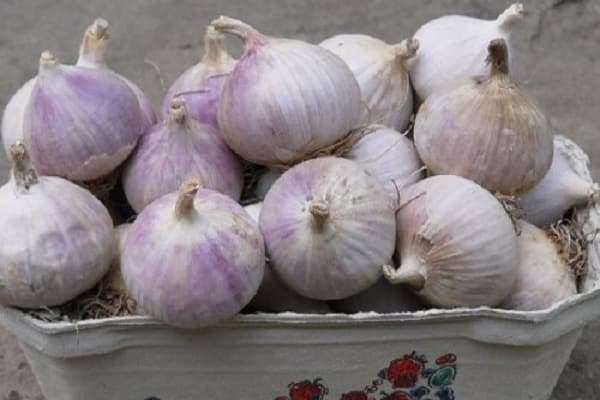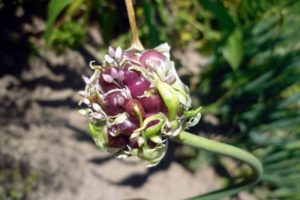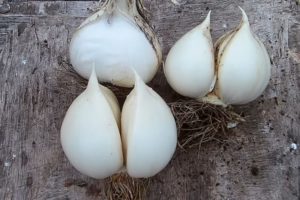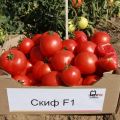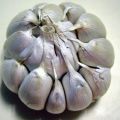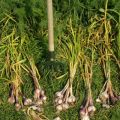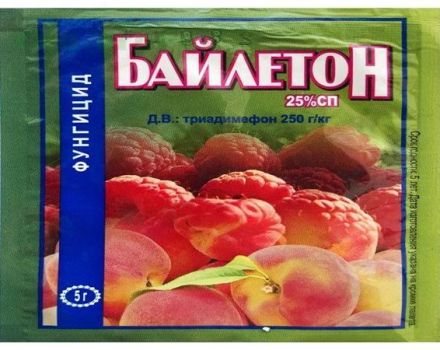Description of the winter garlic variety Skif, features of cultivation and yield
The Skif garlic variety has gained popularity among Russian gardeners, and if you want to try to grow a culture with your own hands, gardeners are advised to pay attention to it. Garlic is an essential ingredient in many cooking recipes. For a person, the regular use of such a product has a beneficial effect on the functioning of the immune system and the whole body, which is due to the high content of useful substances in garlic.
Description of the variety
The winter garlic variety Skif was the result of West Siberian selection. The crop belongs to a variety of mid-season species and is characterized by good yield indicators. The heads are designed for universal use. Fresh cloves have a sharp taste, each clove has a pronounced garlic aroma.
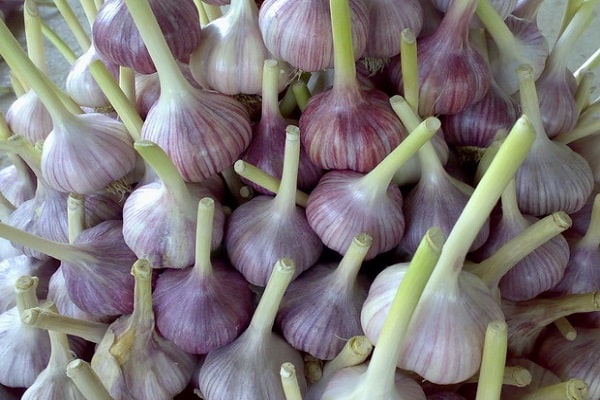
The cultivation of varietal garlic forms arrows when grown. The leaves are 2.2 cm wide and 43 cm long. The plates are green with a slight bluish tinge. Their average number varies from 6 to 7. Description of the heads of garlic:
- the onions are rounded;
- the average weight of one fruit is 30 grams, some specimens reach a weight of 50 grams;
- on average, 1 head contains from 4 to 5 dense teeth with a blunt end, having a simple structure and a large size.
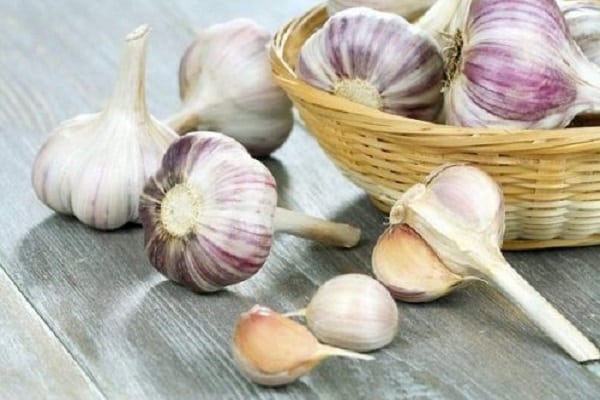
On average, the surface of garlic cloves contains from 3 to 4 scaly layers of a white shade with a slight sheen of lilac. On the outer surface of the adult head, you can see a network of small vessels and purple veins; the teeth are tightly attached to each other.
The variety shows good yields and when grown on an industrial scale, up to 6.6 tons of garlic are obtained from 1 ha. When grown on a personal plot from 1 m2 get 0.7-0.8 kg.
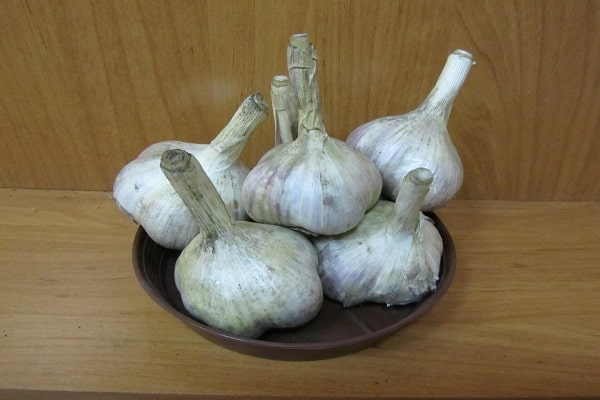
Growing
The characteristics of the winter variety indicate planting in the central regions from early to mid-October. In the northern regions with a cold climate, work is carried out in early autumn. After planting, the cloves need time to germinate and form the root system. Otherwise, the plant will not acquire the proper quality of frost resistance.
Before planting, the cloves are sorted, selecting only strong and healthy slices without defects, signs of mold and putrefactive damage. If one of the cloves is damaged in one head, then the entire bulb is discarded. After selection, the planting material is soaked for 6 minutes in Fitosporin for disinfection, which will increase the protective properties of the plant.
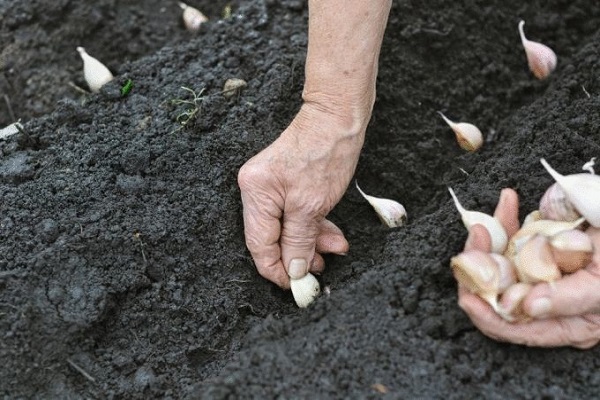
Before planting, the soil is mulched with a thick layer to provide additional soil insulation and reduce the loss of garlic. To do this, you can use the following materials:
- humus;
- peat;
- ready-made compost.
Planting time is determined so that on average 1.5 months remain before the onset of cold weather. Soil temperature should be 10-15 C. Planting is carried out in grooves with a depth of 5 to 10 cm, the distance between the rows is 20-25 cm, between the teeth from 5 to 7 cm. Sand and ash are preliminarily introduced into the grooves.
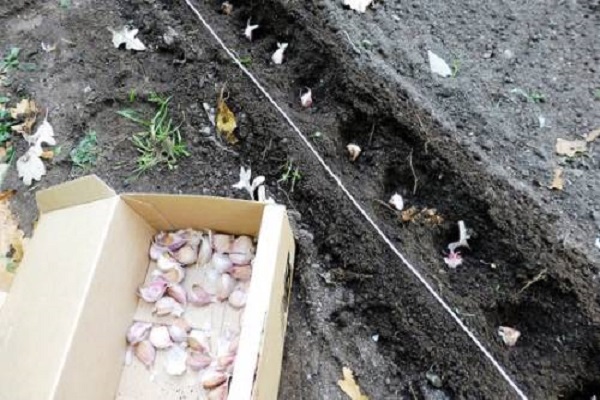
Care features
The landing site should be sunny and well ventilated. When spring comes, there should be no flooding in the selected area. After planting, winter varieties are not watered. The plant does well after the following predecessors:
- cabbage;
- tomatoes;
- zucchini;
- cucumbers;
- legumes.
The first inputs of Skif winter garlic appear in early spring. Time to cracking of the inflorescence film is 98-108 days. Full ripening occurs in early July. After warming up the soil to 10 C the place of permanent cultivation is loosened. If the spring is dry, then the garlic requires watering 1 time within 7 days.

Winter garlic is undemanding to growing conditions and plant care techniques are standard. Plantings need timely watering and weeding. After the arrows 10 cm long have grown, they need to be removed, which will increase the yield by 30-40%.
As the plant grows, it forms an arrow on which the inflorescences ripen later. Bubbles are characterized by their small size and delicate purple hue. Their number in one plant can reach 150. If desired, they can be used as a planting material, for which 5 to 6 garlic arrows are left on one plant.

Advantages and disadvantages
The advantage of the winter variety is its high content of nutrients. The plant is well tolerated in frost and low temperatures in winter. High yield rates are a distinctive quality. The only drawback can be considered the lack of ability of the heads for long-term storage.
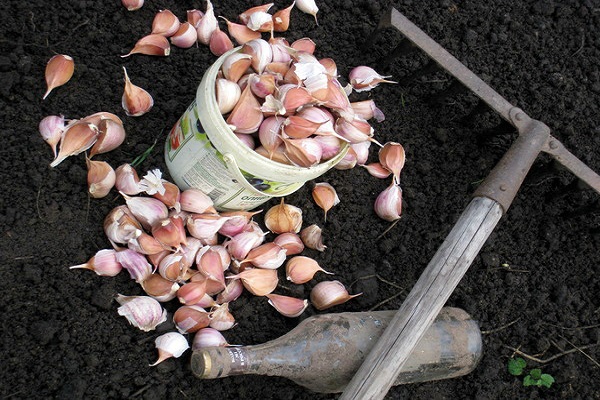
Pests and diseases
Scythian is considered to be resistant to most garlic diseases. The plant is slightly susceptible to bacteriosis and white rot. To prevent contamination, the landing site should be thoroughly surveyed and the landing zones changed periodically.
To prevent root mite infestation, the planting site is recommended to be fumigated with sulfur dioxide or treated with chloropicrin. All post-harvest waste is completely incinerated.
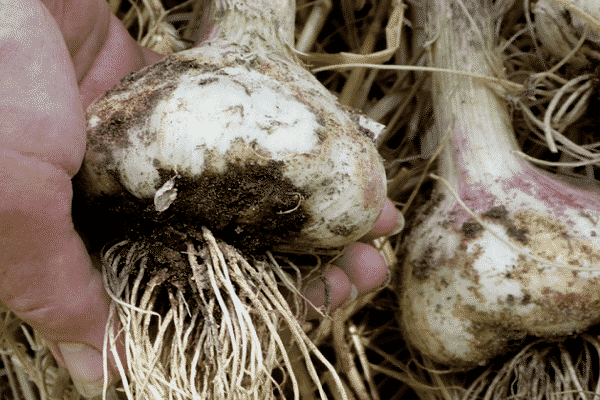
Weakened plants are most susceptible to diseases. During the growing season, the presence of negative changes can be recognized by the appearance of the garlic:
- difficult formation of feathers - the plant is deficient in nutrients, it is necessary to feed;
- the presence of gray-white arrows - evidence of insufficient watering;
- pale green leaves - less watering required.
It is most difficult to determine the cause of yellowing of the leaves. The reason may be an excess of moisture, freezing of the plant, unsuitable soil, or exposure to pests.
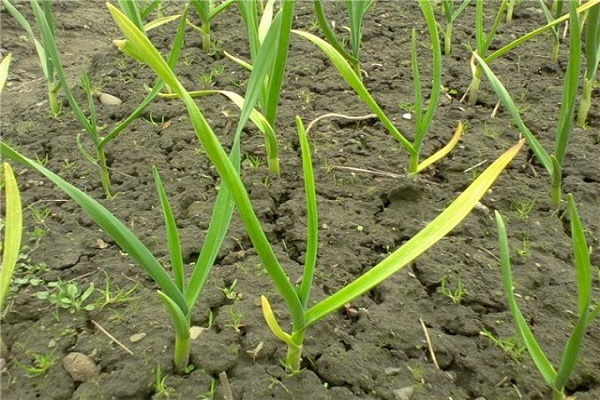
Harvesting and storage
A distinctive feature of winter varieties of garlic is the short shelf life of the heads. Gardeners' reviews indicate that the bulbs after harvesting must be consumed first of all, and only then use spring varieties.
After harvesting, the heads of garlic are dried thoroughly and placed in a cool, dark place. At the same time, the benefits of the winter species in comparison with spring crops are much greater, since it contains a higher content of glycosides, due to which the cloves have a sharper and richer taste.
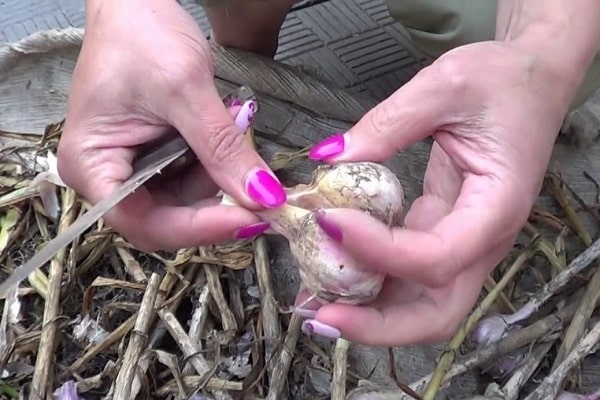
Gardeners reviews
Anastasia, 43 years old:
“Skif is one of the most beloved types of garlic. For several years, it gives stable indicators of yield, can be used for fresh food by lovers of garlic dishes.I choose winter varieties due to the fact that there is an opportunity to start planting calmly after the end of the main garden work. "
Lyudmila, 53 years old:
“The Skif should be grown for food or salting. The distinctive quality of garlic is its medium-sharp taste and high juiciness of the cloves. This variety is not suitable for long-term storage, but the bulbs are able to lie until mid-December. "
